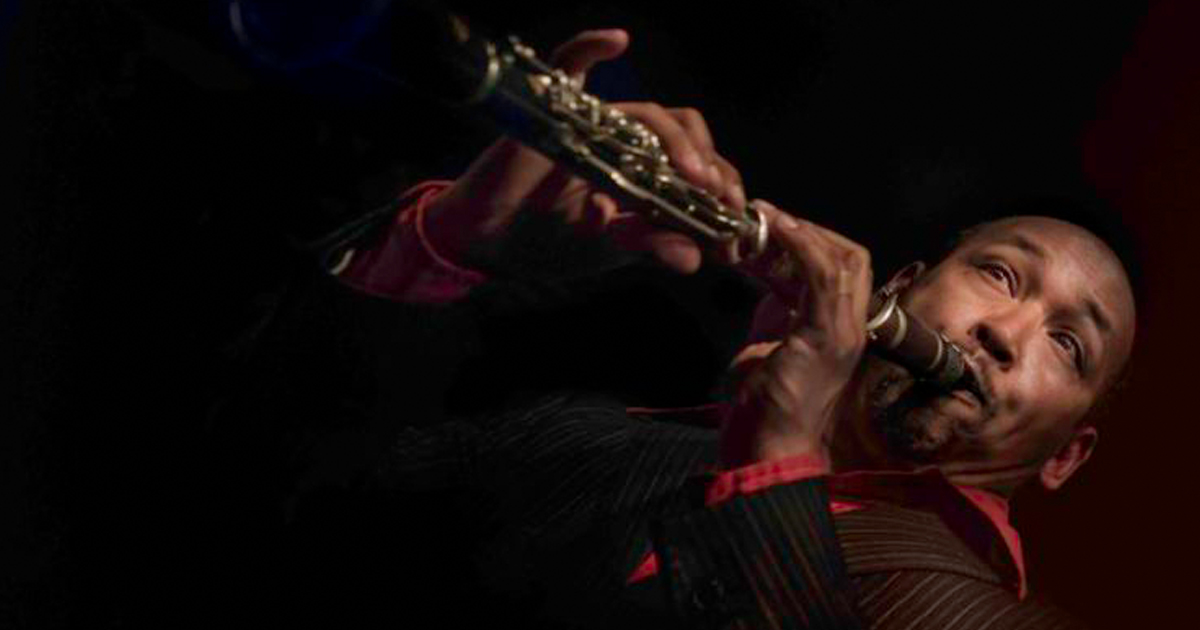
New Orleans music is, and is not, jazz – an Interview with Clarinetist Evan Christopher
“I might be one of the only people that disagrees that jazz was created in New Orleans,” says Evan Christopher recently, as he prepares to share his Grammy-winning New Orleans jazz style at the JAZZ ROOM this month.
Band members and Jazz Masters Evan Christopher, Don Vappie, and David Torkanowsky are each specialists of New Orleans music, on their own instruments, with a common ground rooted in preserving the traditions of the music and making that language accessible to a contemporary audience. We recently caught up with Evan Christopher to learn more about what that means.
What is New Orleans jazz?
First, I say New Orleans music existed before the term “jazz”. I treat it more as an ethnic music, linked to a place and culture. It combines traditions that go back as far as West Africa, and has evolved through the streets of New Orleans for over 300 years. It revolved around a community passionate about social dance with a rhythmic energy different than the language of jazz. Distinct from classical, New Orleans music gets off the written page. But I consider it collective orchestration, rather than jazz improvisation. We’re not making stuff up at the same time, we are making up an arrangement together. Later, jazz elements like improvising around a solo were incorporated, and the term New Orleans jazz was applied.
Your music has a buoyancy, a sense of joy, that comes through. Is that your personality, or the clarinet, or the genre itself?
I wouldn’t say it’s me – it’s the role of the clarinet in the music and it’s the New Orleans tradition. I would characterize it as impish. I’m not playing with other horn players, so the clarinet gets the freedom to dance around the other instruments, support and interact with somebody else playing the melody.
Is the clarinet an instrument typical of New Orleans jazz?
It is indigenous to the style of music. Coming from the Creole class of New Orleans musicians, the clarinet evolved differently than that of western classical music. It has its own specific elements and language. As an example, the clarinet is allowed to imitate the human voice, which it doesn’t get to do in orchestra. It uses vibrato like blues or opera singers. It also gets to be rhythmically active, with a more articulated style. Classical clarinet might float around and join violins, but in New Orleans music, it has a more singing and rhythmic texture.
Which came first for you, the clarinet, or jazz?
Simultaneously. As a child of the ‘70s, with the Paul Newman and Robert Redford movie The Sting, Scott Joplin rags were getting airplay. My dad had a few LPs in his collection with instrumental pop music like movie themes and Henry Mancini stuff, rich with jazz harmony.
In Junior High when we chose an instrument, I was small and young for my grade, so the clarinet was the only one that felt like it suited me. I could understand it – when you put your fingers down the instrument, the notes got lower. I leaned toward earlier styles of jazz that featured clarinet more prominently.
But then, to be in school jazz band, I had to switch to saxophone. Finally in college, with too many sax players, I went back to clarinet. After university, I uncovered my real interest when I moved to New Orleans.
You use the name “Clarinet Road” in a number of ways: as an album title, an educational platform, a band. What are you expressing with that title?
The short story is that I was on tour in Rome in the early 1990s, before I moved to New Orleans. I met an old jazz clarinetist named Tony Scott, who had been friends with Billie Holiday and Charlie Parker. He had a photo of he, Holiday, and Parker at Carnegie Hall and autographed it for me, adding a special note “Good luck on clarinet road, with lots of curves.”
It expresses my path and passion for clarinet, and specifically the tradition of clarinet indigenous to New Orleans. It doesn’t matter if I’m at a jazz festival, in a wedding band quartet or delivering a workshop, it’s my unifying principle.
As an educator, what is your goal in approaching a room of students of all levels and instruments? How do you give each one something to walk away with?
I go back to just musicians making up melodies their own way. Whatever entry point someone comes in at, whether you’re classically trained or have studied jazz, all benefit from meeting in the middle with the idea of interpreting a melody in the moment. No matter if you have a masters in jazz studies or are just learning an instrument, all benefit from returning to the idea of expressive timing. Together we can reenergize a melody in the way New Orleans musicians did from the beginning, when they got away from printed music. Most collective success starts there.
Join the JAZZ ROOM January 20-21 2023 to hear these three musicians in person, encourage your middle and high school musicians to join the free workshop January 21st, or afterward pop over to JazzArts Charlotte’s YouTube channel for a rewind of these experiences. And don’t forget to follow these incredible musicians.
—————————–